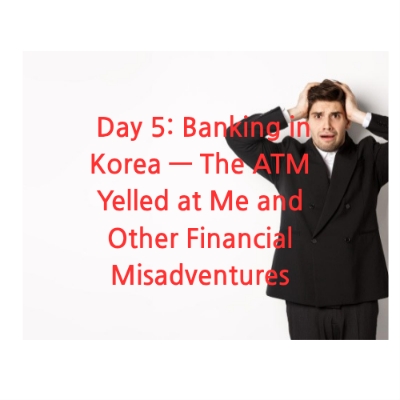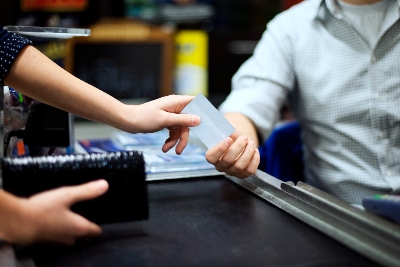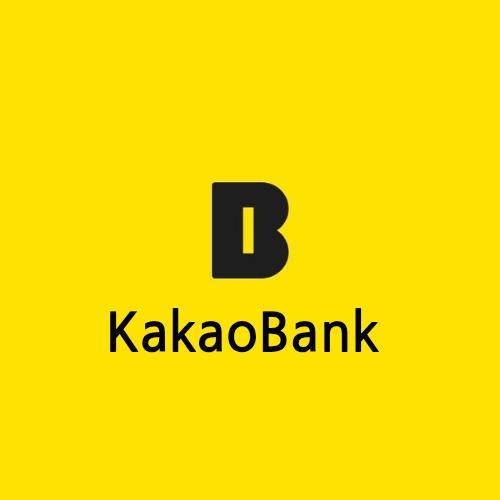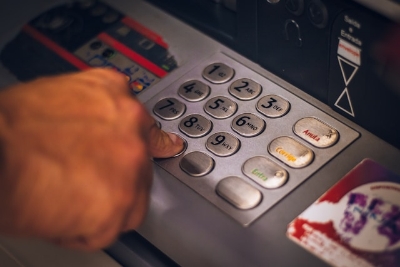상세 컨텐츠
본문 제목
Day 5: Banking in Korea — The ATM Yelled at Me and Other Financial Misadventures
본문
The ATM's Ultimatum and My Ongoing Korean Financial Follies
New to Korean banking? From angry ATMs to confusing apps, here’s a foreigner’s guide to surviving money matters in Korea — mistakes included.
*Because transferring money shouldn’t feel like launching a rocket, but here we are.*

So picture this: I’m standing in front of an ATM in Seoul, sweat dripping down my back.
I insert my card, choose “English,” and suddenly... the screen flips back to Korean.
Then the machine beeps. Loudly. Angry beeps.
I panic and hit Cancel. More beeping. I back away like I just activated a bomb.
Welcome to Korean banking, my friend.
It’s not broken. It just feels like it.
🏦 Opening a Bank Account: Easier Than You Think (Until It’s Not)
You’ll need a few basic things before they even let you near a Korean bank account:
* Your ARC (Alien Registration Card) — without it, you’re invisible to the system.
* A Korean phone number — preferably one that actually works during banking hours.
* And most importantly, **patience**. The deep kind.
The teller might not speak English.
You might not understand what you're signing. But you sign anyway.
Then they smile, hand you a physical bankbook (which, yes, still exists in 2025), and you’re officially part of Korea’s financial web.
💡 Pro tip: Banks like KEB Hana, Woori, and Shinhan tend to offer the most foreigner-friendly support.
Don’t expect magic, but you might get a smile and slightly less confusion.
🎒 Just arrived in Korea and still figuring things out?
Don’t miss [Day 3: 10 Things I Wish I Knew Before Living in Korea] — culture shocks, emotional resets, and lessons you’ll wish someone told you.

📱 Mobile Banking: A Necessary Nightmare
Here’s where things spiral.
I downloaded my bank's app thinking it would simplify my life. What a beautiful, naive thought.
* You start by verifying your phone number. Then your ARC. Then your bankbook. Then your soul.
* One app isn't enough. You need a certificate app, a security app, and an authenticator app. Possibly a ritual sacrifice.
* You’ll be asked to set up two passwords, a pattern, and answer security questions in Korean. No, you can’t skip them.
Eventually, you get in.
And then you update the app... and it all resets.
My personal best was reinstalling the entire system three times in one afternoon. I cried a little.

💸 Transferring Money (Domestic): Surprisingly Great
Once you're through the setup chaos, domestic transfers are actually amazing.
* Transfers between banks are **instant**. I sent rent to my landlord while standing in the elevator.
* Apps like KakaoBank and Toss make everything beautiful and human-friendly. You can even send money with emojis.
* You don’t need to go to a branch ever again. Unless the app breaks.
If you’re living in Korea long-term, set up automatic transfers for rent, phone bills, and more.
It saves you stress and awkward reminders.

🌎 Transferring Money (International): The Digital Stone Age
Trying to send money overseas? Prepare yourself.
* You’ll need the recipient's full name, address, bank name, SWIFT code, and your own sanity.
* Many Korean banks require you to physically visit a branch for your first international wire transfer.
* The forms? In Korean. The instructions? Vague. The teller? Helpful, but puzzled why anyone would send money outside Korea.
Once, I put "helping my parents" as the reason for sending money.
They asked if I could prove it. With what? A selfie with my mom?
Workarounds:
* Wise — My go-to now. Cheap, fast, user-friendly.
* Revolut — Also useful, especially for budgeting between currencies.
* KakaoBank — Paired with Wise, it’s my current setup.
⚠️ Warning: One wrong character can delay your transfer by days. Or kill it entirely.
Triple check everything.
🛒 Grocery shopping in Korea isn’t simple either.
If you haven’t read [Day 4: The Weird, the Wonderful, and the 'Wait... What?](👉 링크), you’re one dish soap away from disaster.

📉 Cash vs. Card vs. Everything Else
Let’s break down how people actually pay for things here:
* Cards dominate. Credit and debit cards are accepted pretty much everywhere, even tiny food stalls.
* Cash is still important. Some markets, old-school restaurants, and random taxis won’t take cards.
* T-Money cards are strictly for public transportation. Don’t try to pay for your burger with it. I did. Didn’t go well.
* Apple Pay is new and inconsistent. Cool when it works, embarrassing when it doesn’t.
💡 Always keep at least ₩10,000 in your wallet.
Not having cash here feels oddly reckless, like you forgot to wear shoes.
📋 The Day the ATM Rejected Me
This part still haunts me. I needed cash.
Went to the nearest ATM. Inserted my card. Selected what I thought was the right option. Hit ₩50,000.
The ATM screamed at me. In Korean. Loudly.
Everyone turned around. I turned red.
Turns out, I had picked a withdrawal method for a type of account I didn’t even have.
Lesson: Not all ATM buttons are your friend. Some are traps.
Also, ATMs randomly shut down after midnight. Why? Still don’t know.
📚 Terms You Should Probably Know
| English | Korean | Romanization |
| ---------- | ------ | --------------------- |
| Deposit | 입금 | ip-geum |
| Withdrawal | 출금 | chul-geum |
| Balance | 잔액 | jan-aek |
| Transfer | 송금 | song-geum |
| ATM | 현금인출기 | hyeon-geum in-chul-gi |
You don’t need to memorize them,
but recognizing them on ATM screens or banking apps will save you hours of stress.
🪙 What I Wish I Knew Before
* Most banks close around 4 p.m. Don’t show up at 3:59. They will pretend not to see you.
* Some ATMs don’t work late at night. Yes, really.
* Your ARC is basically your banking passport. Don’t lose it.
* You will mess up your first wire transfer. It’s a rite of passage.
* Eventually, you’ll start helping your Korean friends with their apps. That’s when you know you’ve made it.
💡 Want to survive the Korean finance jungle?
Here are the sites that saved me (eventually):
Wise – Stress-Free Global Transfers
KakaoBank – Mobile Banking That Works
KEB Hana Bank – English-Friendly Support

🎮 Final Thoughts
Banking in Korea will test your patience, fry your brain with apps, and occasionally yell at you.
But it’ll also give you a sense of weird pride when you finally transfer money smoothly or decode a receipt with only Hangul.
It’s chaos, but it becomes manageable. Maybe even fun.
🏠 Coming up next on Day 6:
We dive into Housing in Korea — deposits that’ll make your jaw drop, realtor fees you didn’t see coming, and why your dream apartment might already be gone.
Bring snacks. And maybe a calculator.
'Life in Korea' 카테고리의 다른 글
| Day 17 : Living with a Maltese in Korea (3) | 2025.07.21 |
|---|---|
| Day 14: Han River Picnic Culture — Korea’s Chillest Obsession (0) | 2025.07.12 |
| Day 6: Finding a Home in Korea – Deposits, Studios, and Paperwork (1) | 2025.07.09 |
| Day 3 : Living in Korea as a Foreigner- 10 Things I Wish I Knew (0) | 2025.07.08 |




